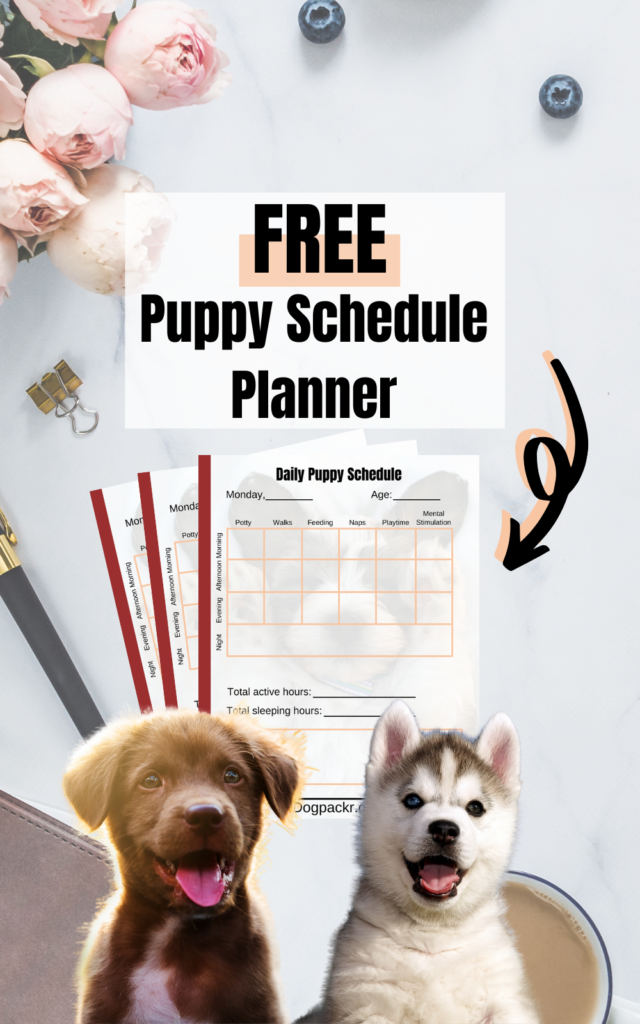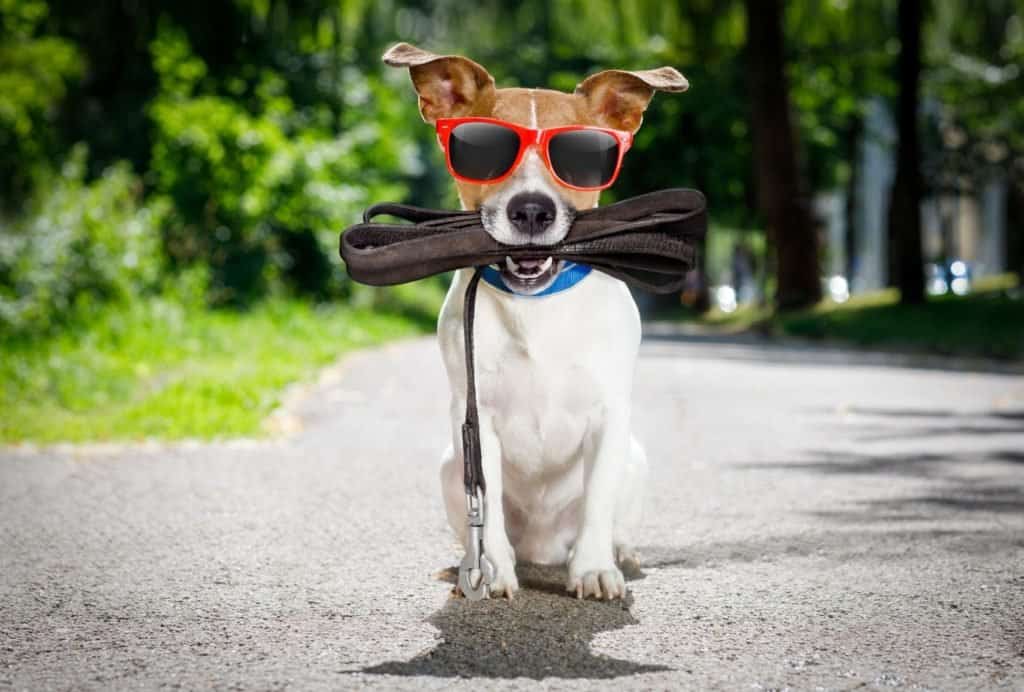
I know, hiking with a dog off leash is a sensitive topic. Some people feel like hiking with a dog isn’t any fun if he’s on a leash. Others think every dog should be on a leash, no matter what.
And then there are lots of rules and regulations depending on the park or the trail which sometimes mean that dogs aren’t allowed at all, let alone off leash!
Regardless of all those factors, I’d like to show you how you can go hiking with a dog off leash and what you need to observe to make it a positive experience for everyone.
With a few precautions, hiking with a dog off leash is possible. First off, it most be allowed where you’re hiking. Next, you also need to train your dog for off-leash walking. This means rock-solid recall and ensuring he can walk to heel regardless of distractions and ignore any people and animals.
Now, that’s the basic, short answer. Let’s look at the details next.
Table of Contents
General information about off leash hiking with a dog
So, before we get into the actual tips and tricks on how to make hiking with a dog off leash a fun and positive experience, I’d like to give you some general information on the topic.
Pick dog friendly hiking trails
First of all, you always need to check that the trail you want to hike is dog friendly. That probably goes without saying but it should really be the first thing you check when looking for your next hiking trail.
However, dog friendly doesn’t necessarily mean “dog off leash friendly”. So, when you do your research, make sure you check that, too.
If dogs aren’t allowed off leash, please just stick to the rules! There’s nothing more annoying (and potentially dangerous) than a dog off leash approaching another dog that’s leashed. More on that in a minute.
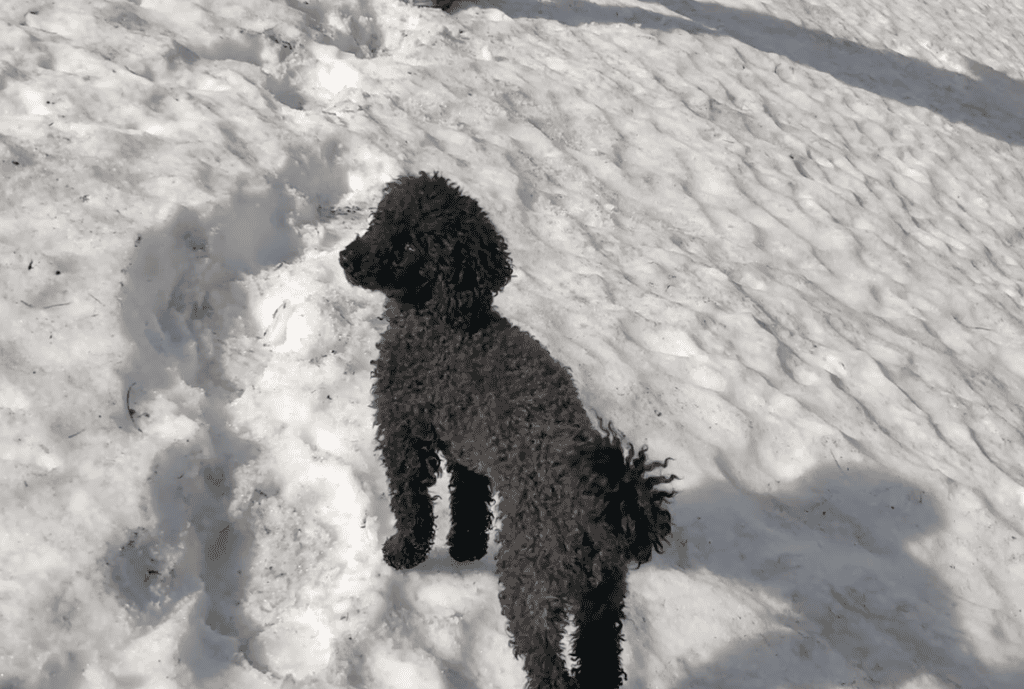
Where can I let my dog off leash?
In general, you can always let your dog off leash in dog parks and designated dog areas. Some states have pretty strict leash laws, which means that dogs have to be leashed on all trails. Others are more liberal.
European countries are usually much more liberal. For instance, in Switzerland you can let your dog off leash almost everywhere. The only exception are forests between April and July because of the wildlife breeding season.
So, always do your research!
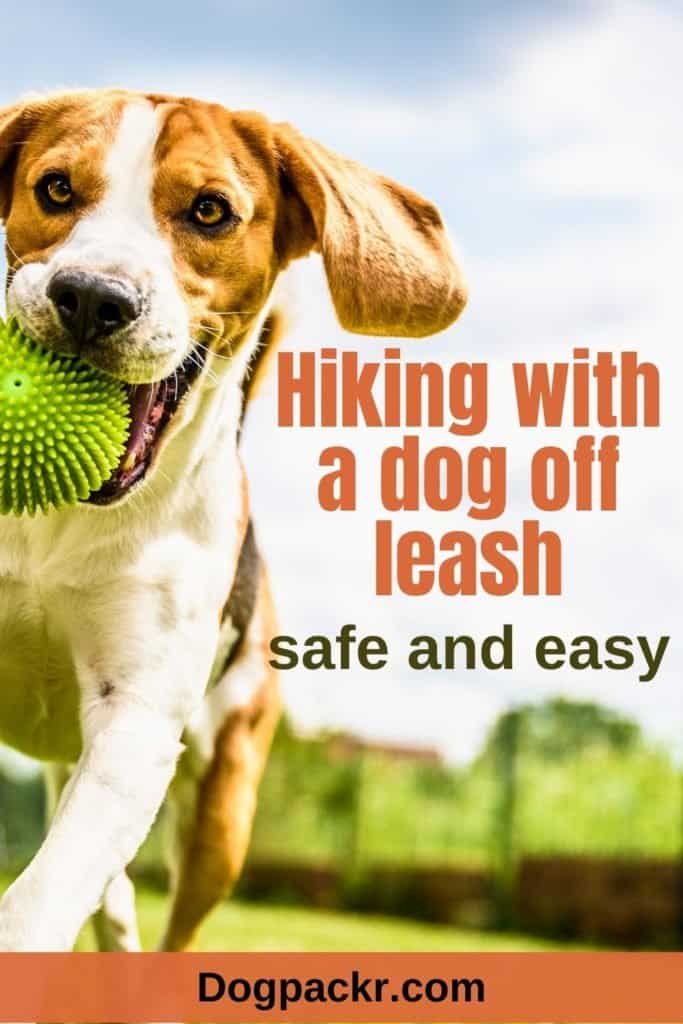
What do you do if an off-leash dog approaches?
First of all, stay calm!
So, as I’ve just said, encounters between off-leash and leashed dogs are pretty annoying and can become dangerous.
The reason for that is that the leashed dog can’t move around freely. And since body language and distance is an important part of canine communication, this lack of movement can easily be misunderstood by the other dog.
Here you can see how much space dogs need to interact and communicate:
On top of that, the leashed dog might feel anxious or threatened, because he can’t back out.
So, the best way to deal with an unleashed dog—if your own dog is leashed—is to either politely ask the other owner to please leash their dog. Or if that doesn’t work, I’m making a big detour around the other dog. This is actually canine communication too and acts to de-escalate the situation.

If none of this works and the other dog doesn’t seem friendly, it’s best to stand in front of your own dog and swing something in circles, like the end of your leash, a stick or simply your arm. Accompany this by saying “no” or something like that in a loud voice.
This startles the other dog and will most likely make him lose interest in your dog.
You can also try tossing treats to distract him. This works best in high grass where he has to look for them. Then you can quietly walk away, giving the other dog lots of space.
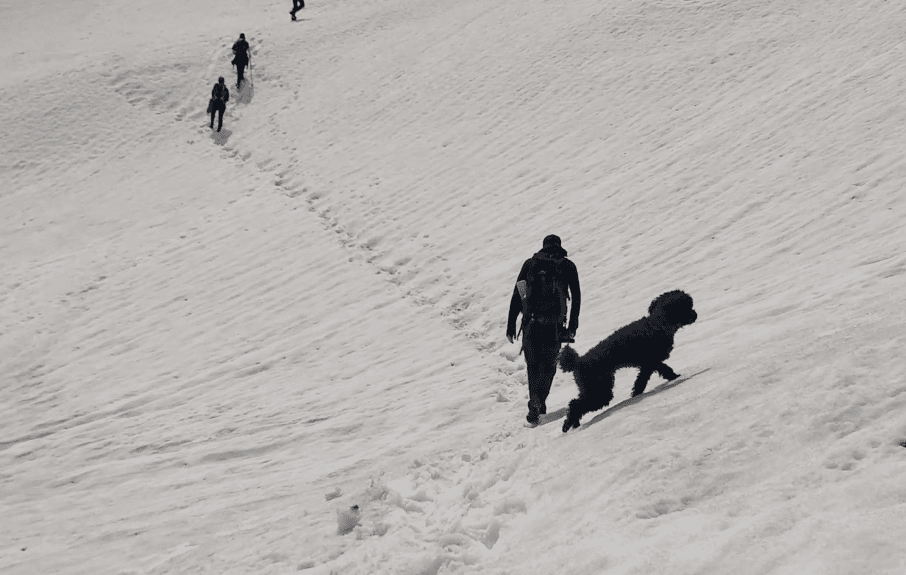
How to hike with a dog off leash
Okay, now let’s get into the actual steps you need to take to have the best experience hiking with your dog off leash.
1. Train basic commands
First of all, you need to train him to obey basic commands.
Your dog definitely needs to know sit, down, stay, walking to heel, and of course, a solid recall.
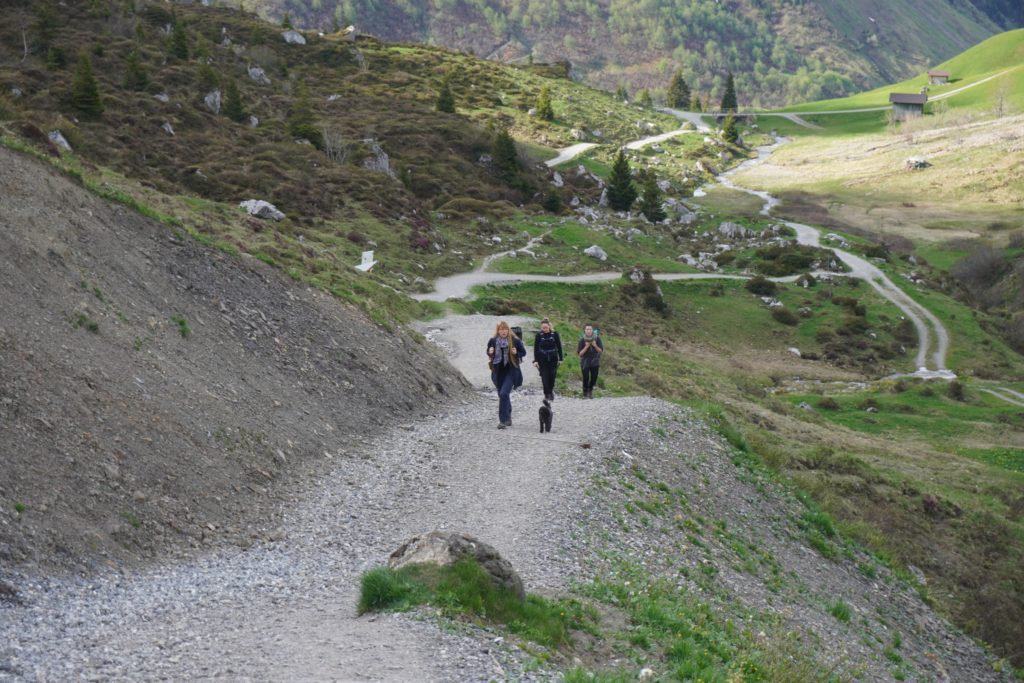
2. Train a super solid recall
Your dog’s recall is honestly the most important part of off leash training. If that doesn’t work, you simply can’t let your dog go off leash. It would be too dangerous for your dog and other people or animals.
So, make sure to train this in your backyard, a fenced park or with a long leash until it works 10 times out of 10.
Really the most important part of training it is to always reward him when he comes to you. Yes, even if he went after that squirrel first!
I know this might seem counterintuitive but your dog has a memory span of about 2 seconds. If he’s coming back after his chase, he doesn’t remember it. So, if you scold him at that moment, he feels punished for coming back to you…
See where I’m going?
Always make coming back to you the best thing possible!

How to train a solid recall
Make sure to start in an environment where there is very little distraction, such as your backyard. Then, slowly train in slightly more distracting areas, such as in a field, using a long leash.
If your pup is very interested in other dogs, the dog park would probably be the most difficult part to train. So, once his recall is super solid even with other dogs around, you know he’s ready to go off leash on the trail!
For prey-driven dogs, on the other hand, the ultimate level will be a squirrel or cat running by. If he can focus on you and come when called with that kind of distraction around, he’s ready, too!
If your dog is still a puppy, I highly, highly recommend you train him to focus on walking with you. I did this when I first got Baloo as a puppy and it honestly helped me so much.
When they’re still very young, puppies are naturally very focused on you because they rely on you to survive. Losing you would put them in a very bad situation.
This focus is why you can let them off leash and train like that, as long as you start out somewhere with basically no distractions. The best place is just a meadow or your backyard.
The trick is to walk and always turn around as soon as he gets in front of you. Don’t look back directly at him. Just make sure he’s following, which he will! Then walk again until he’s overtaking you and immediately turn around again.
This worked like a charm for Baloo and me. Now, he’s still very focused on me and rarely goes farther than a few feet away. And even if he does, he’s got a solid recall or will turn around by himself.
3. Always have a leash at hand
Even if you trained him well, there will always be situations where you have to leash your dog. The most important of these is another leashed dog approaching.
Unless your dog is a master at walking to heel and ignoring other dogs, make sure to leash him as well. This helps reduce any possible friction.
In case your dog gets a little too interested in other hikers or wildlife, you’ll also have to leash him when other people are approaching, when you’re hiking in the forest, and in similar situations.
All that makes leashes essential gear for hiking with your dog—even for off leash hiking!
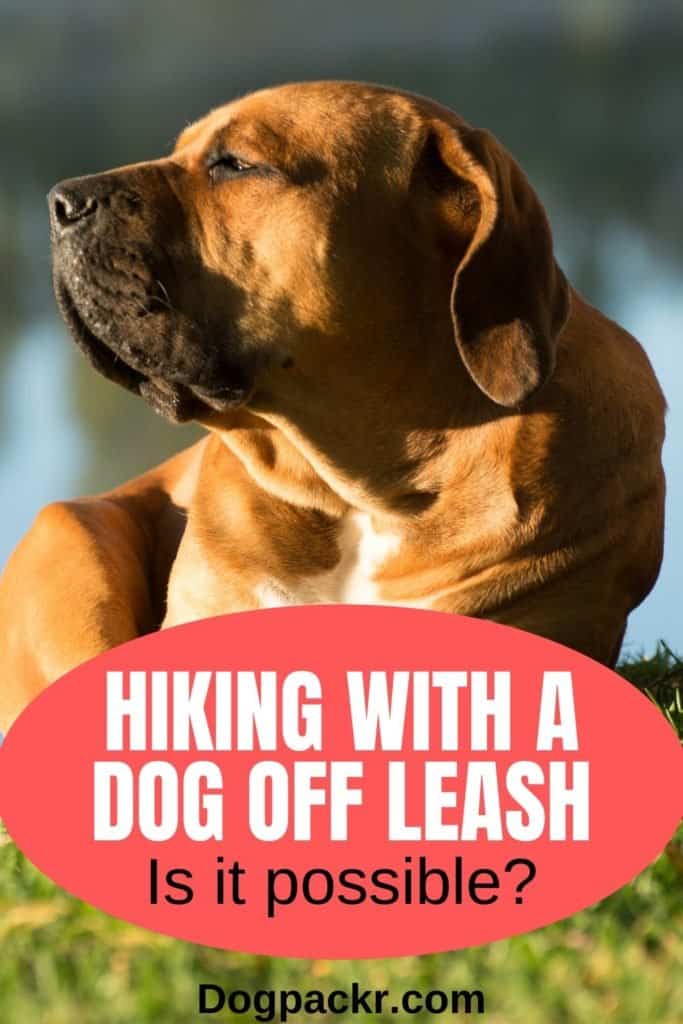
4. Leash your dog if another leashed dog approaches – always!
I know, I’m repeating myself but this is really super important. You must make sure you’ve got your dog under control, and this includes leashing him if another leashed dog approaches!
This is also the main reason why I generally don’t allow Baloo to walk in front of me. It makes it much easier for me to check who’s coming and leash him if necessary.
5. Make sure he stays close to you
Staying close to each other is a great help for making your hike much more relaxed.
I’ve noticed that Baloo listens well, even with other small animals around (like birds or squirrels)—as long as I make sure he stays close to me.
He normally does that by himself but there are times where he feels a little more independent. If I just let him go, then he loses that connection with me and he wanders off following an interesting smell.
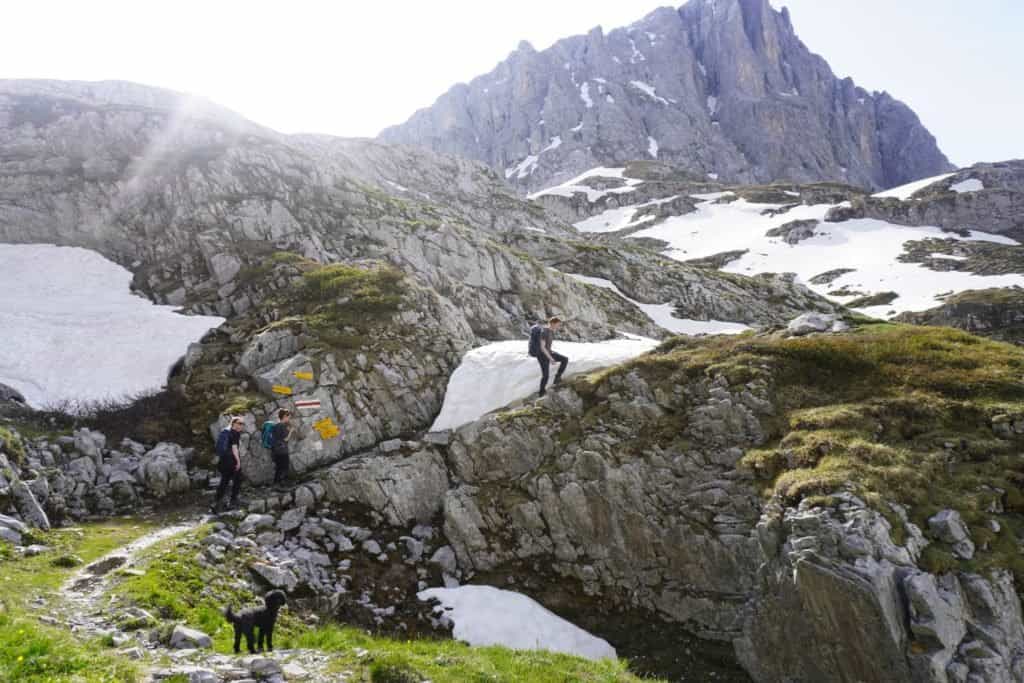
This is why I try to keep our communication going, calling him back if I notice he goes further than usual. And of course he gets yummy treats and fetch games regularly if he stays close to me!
Here’s some inspiration:
6. Leash your dog on busy trails
I generally recommend leashing your dog on busy trails. It’s just much more relaxing to have him under control without having to double-check that there’s no other leashed dog or child approaching every second.
7. Leash your dog where there’s wildlife
Another important point is to leash your dog where you know that there’s wildlife. This protects the wildlife from your dog, but also the other way around!
You definitely don’t want your dog to wander off leash in bear country or where there are snakes!
8. Pick up your dog’s poop
I know, poop is just nature, right?
Well, yes, but the problem is that there are just so many dogs that it gets the natural ecosystem out of balance if all the dog poop stays where your dog leaves it…
This is why you should always pick up after your dog, even when hiking in the mountains—or bury it at least.

9. Communicate with other trail users
If someone you meet looks anxious, leash your dog. Even if they don’t, you should probably at least ask them.
It’s just as important to communicate with other dog owners. Only let your dogs have contact if the other owner approved it.
Personally, I recommend to only let dogs have contact off leash, because leashes again are a hindrance to canine communication. So, if you meet another dog owner with a leashed dog, just ask them if it’s okay for the dogs to have contact.
10. Just be a responsible dog owner!
To wrap this up, just make sure to be a responsible dog owner.
Do your research for what kind of behavior is required from you and your dog. You don’t want to frighten or annoy anyone on the trail, nor break any local law.
And of course, the basic trail rule always counts: leave the trails as you found them and pick up after you and your dog.
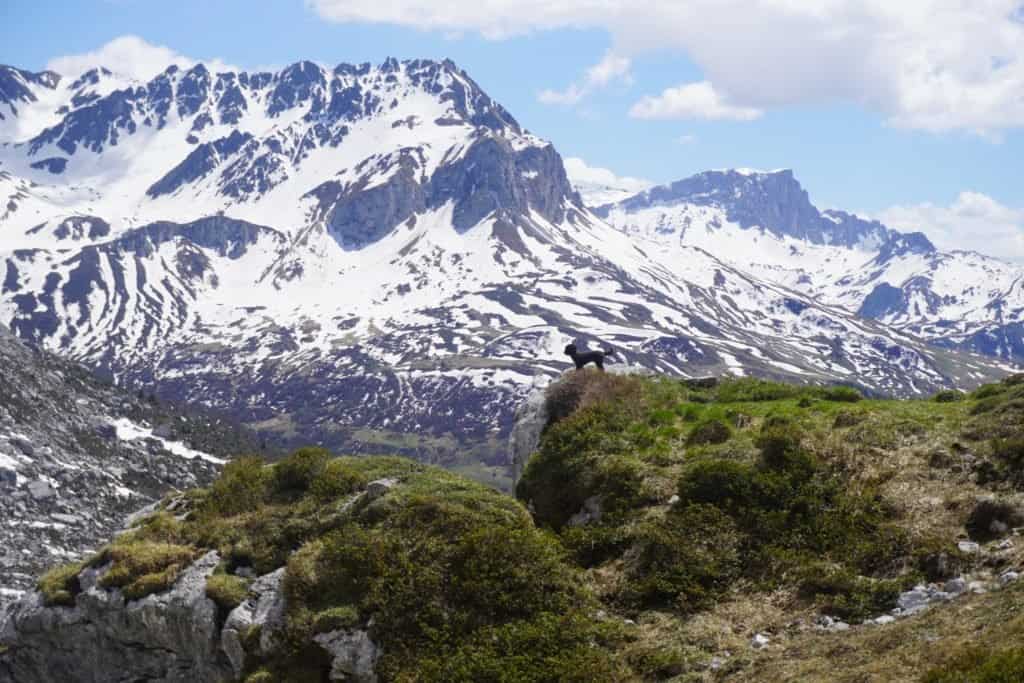
General tips for dog friendly hiking
If you’d love to go hiking with your dog, whether off or on a leash, then I’ve got a few other articles for you!
First off, you might be wondering how far you can hike when you have your dog along. The quick answer is that it mostly depends on his stamina, just like it does with humans!
With some training, most healthy dogs easily manage 10 or 15 miles a day. For more info on this and on how to build up to distances like that, check out these two articles:
- How far can a dog hike in a day? Probably more than you think
- How long can a small dog hike? A preparation guide
Picking up on the second of these articles, you might want to know more about hiking with small dogs—or maybe even puppies—in particular.
The important thing to know is that yes, even small dogs or puppies can come on hikes. My Baloo is a Mini Poodle, after all! Some breeds, though, will be better suited to it than others. For more on that, have a look at these posts:
- Complete guide for hiking with a small dog for beginners
- 10 things you need to know before hiking with a puppy
- 10 best small dog breeds to take hiking this summer
Finally, there’s equipment. You’ll need some gear for your dog, too! So, here’s my ultimate dog hiking pack list—and yes, your dog might be able to carry some of his own kit. Check it out:
- Complete backpacking packing list for you and your dog
- How much weight can a dog carry in a backpack?
- 6 best dog backpack carriers for hiking
Conclusion
Hiking with your dog off the leash can be great fun and a bit of adventure.
You do have to prepare for it, though. The most important bits are working on your dog’s training and always keeping a leash on hand. If you follow the 10 tips in this article, there’s nothing in the way of going off leash when hiking with your dog!
Let’s hit the trails!
*Disclosure: This post may contain affiliate links, meaning, I get a commission if you decide to make a purchase through one of my links, at no cost to you.

